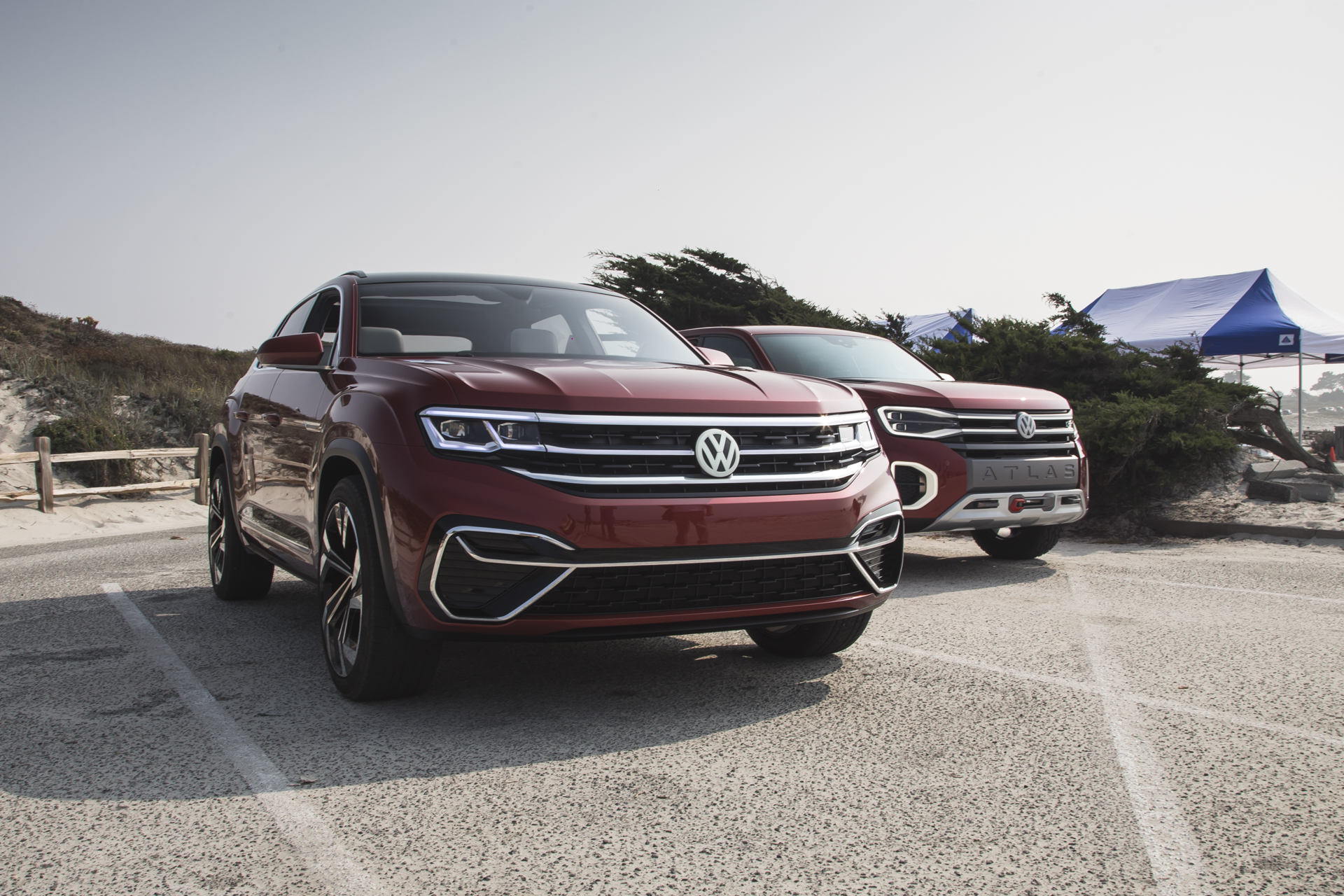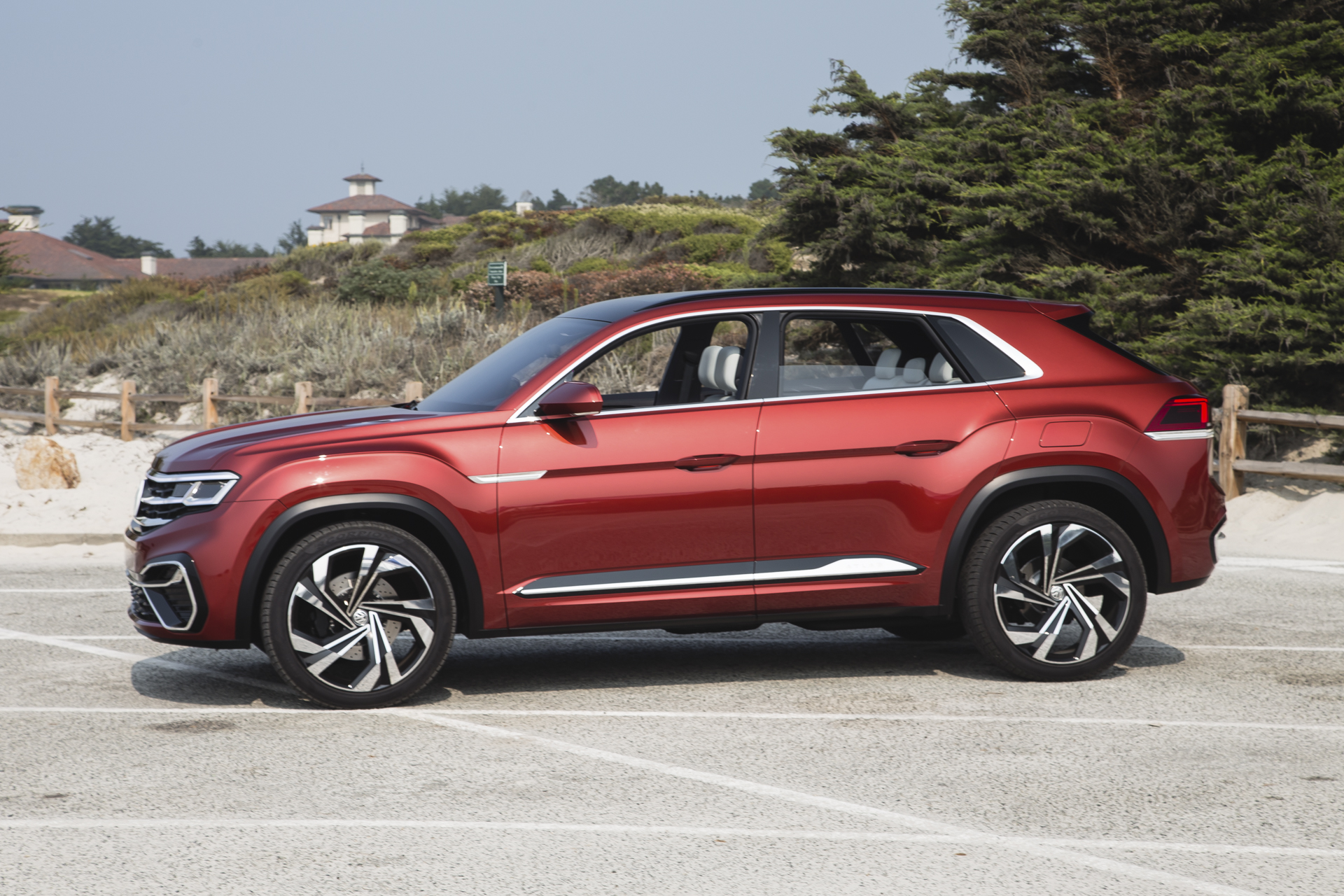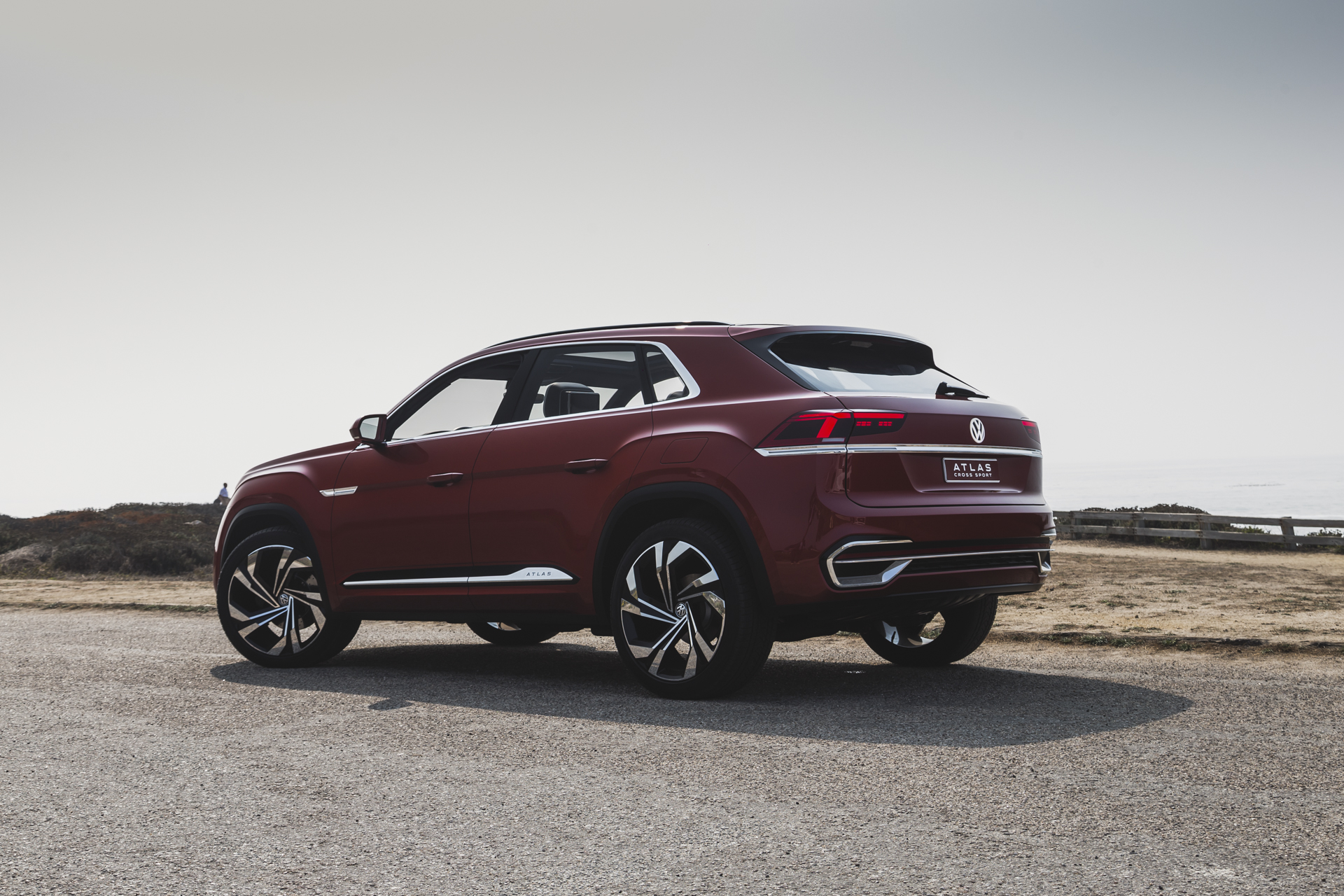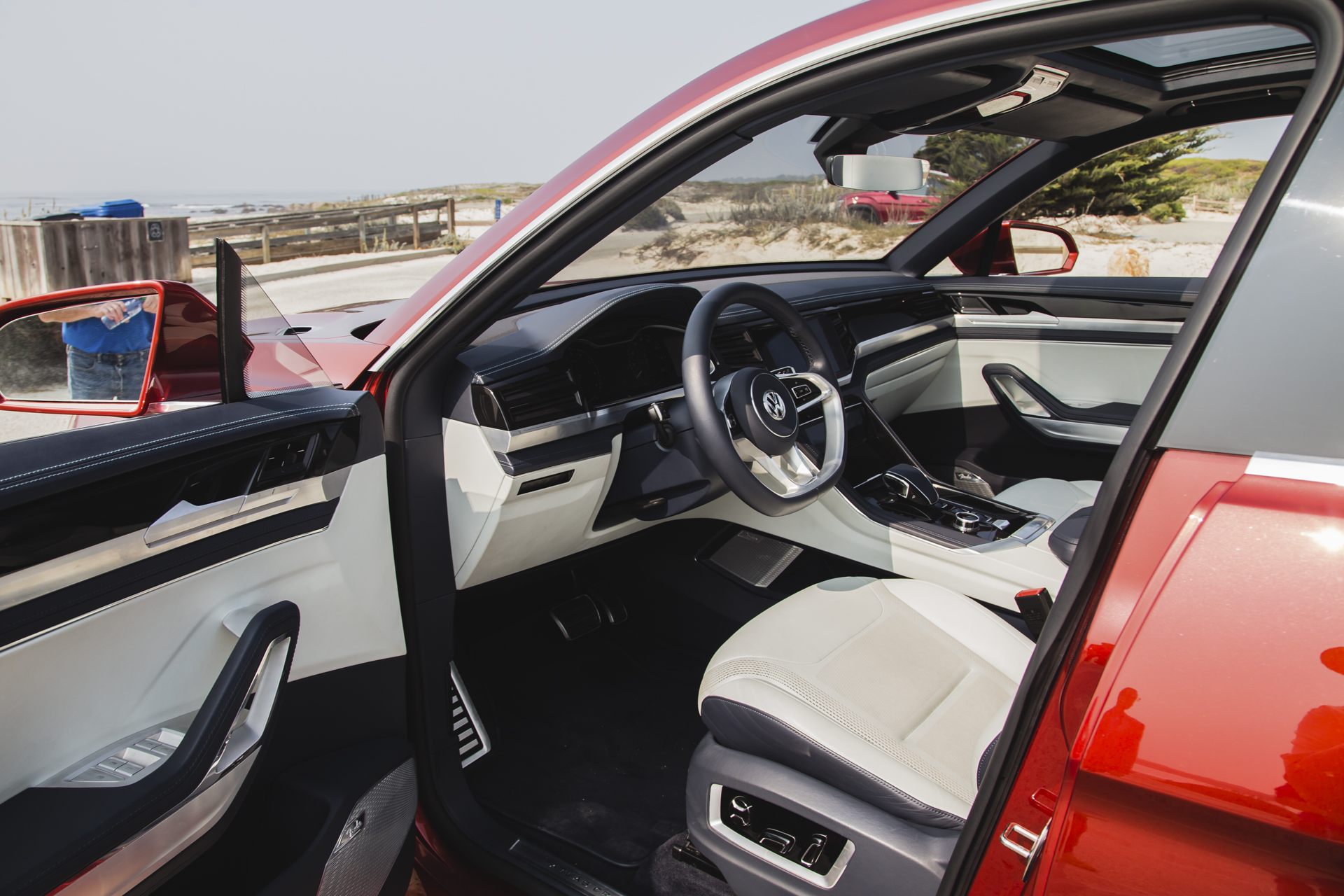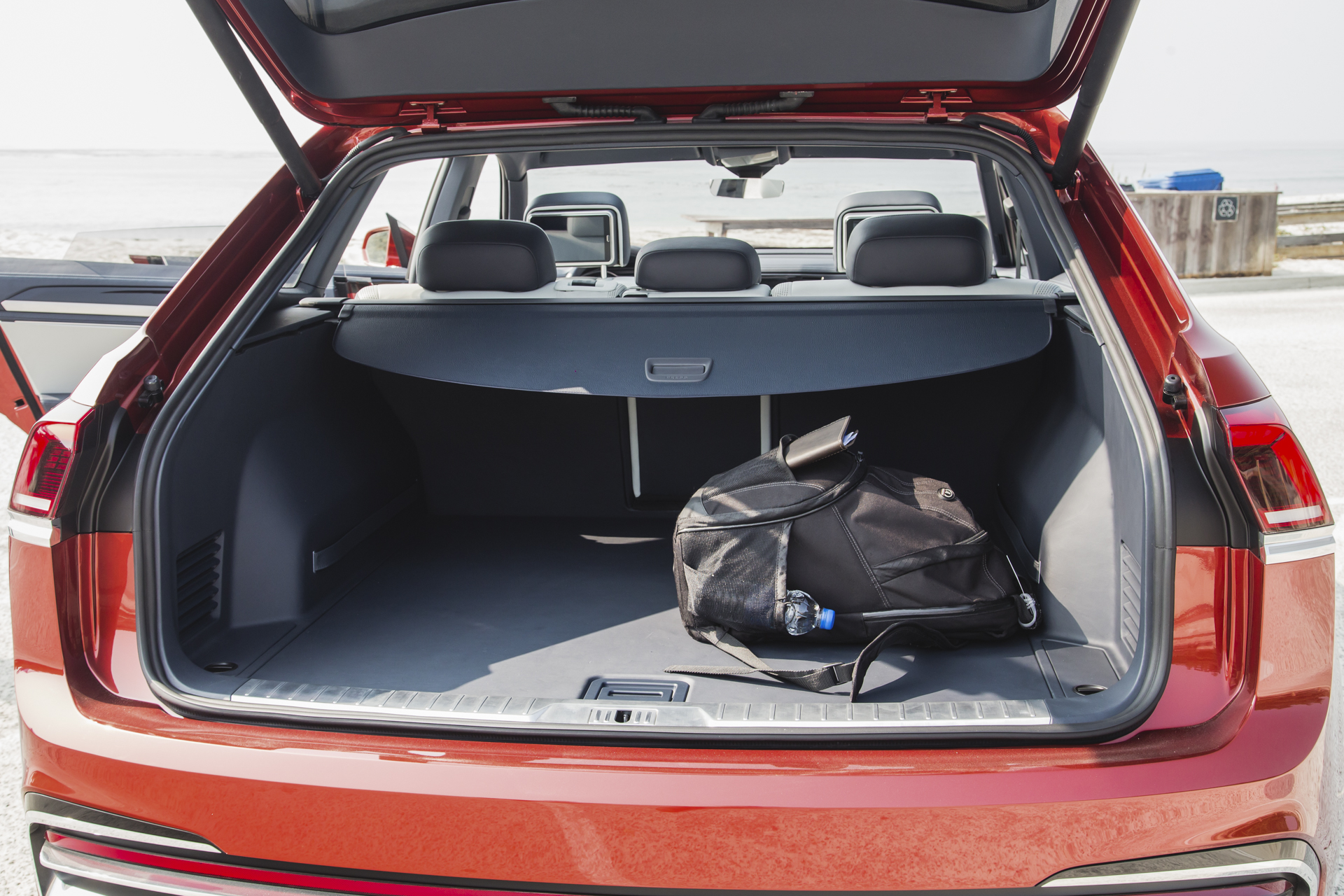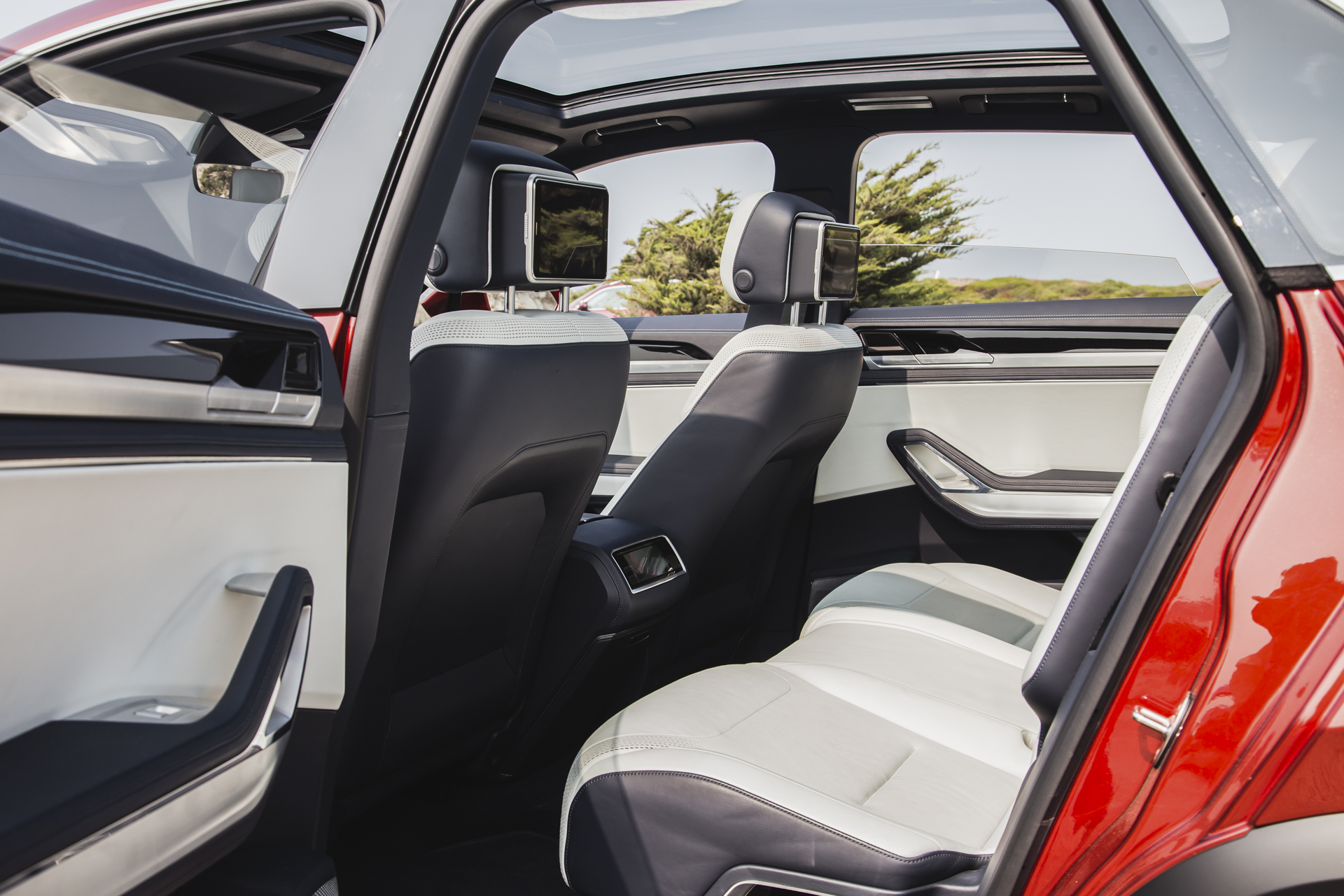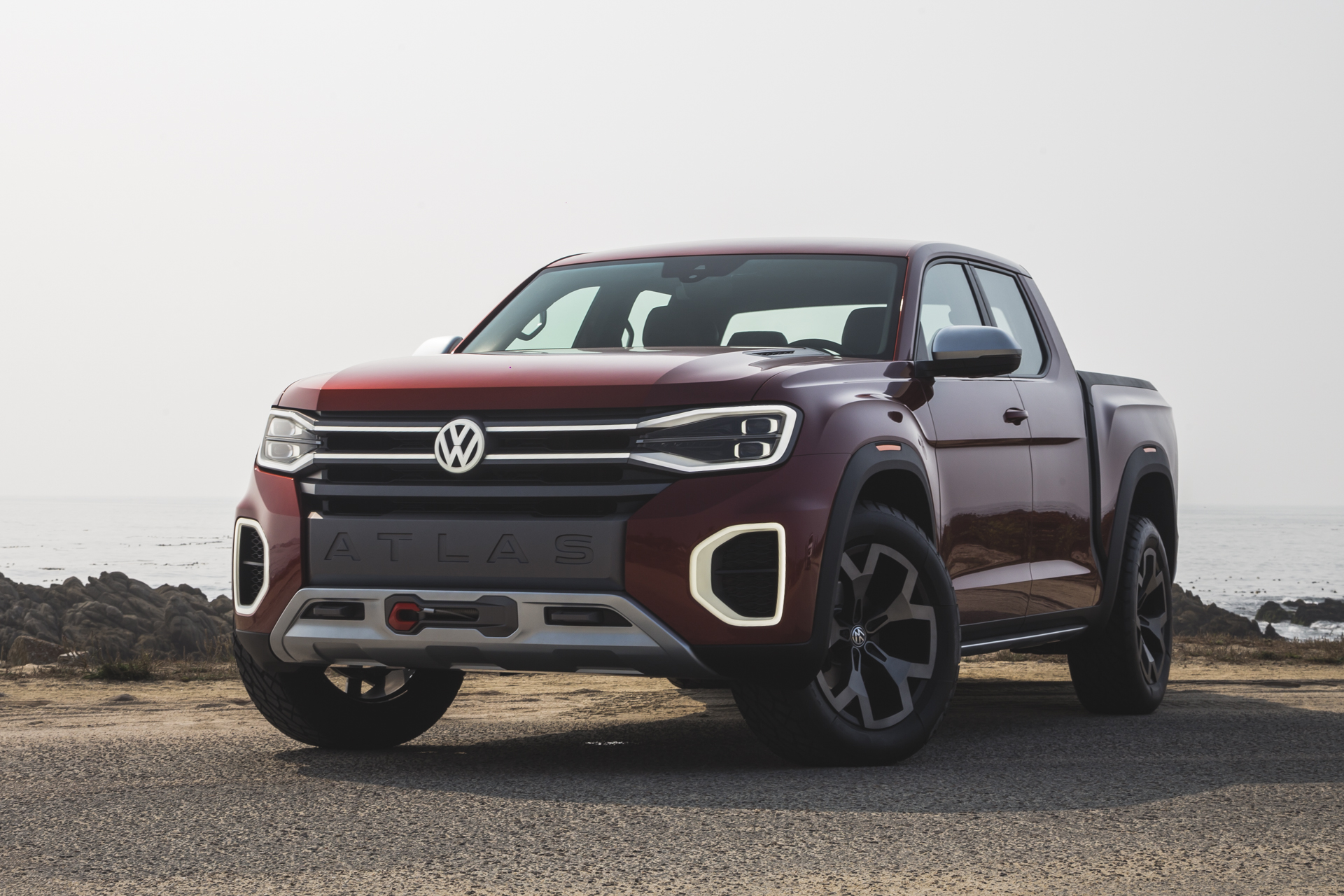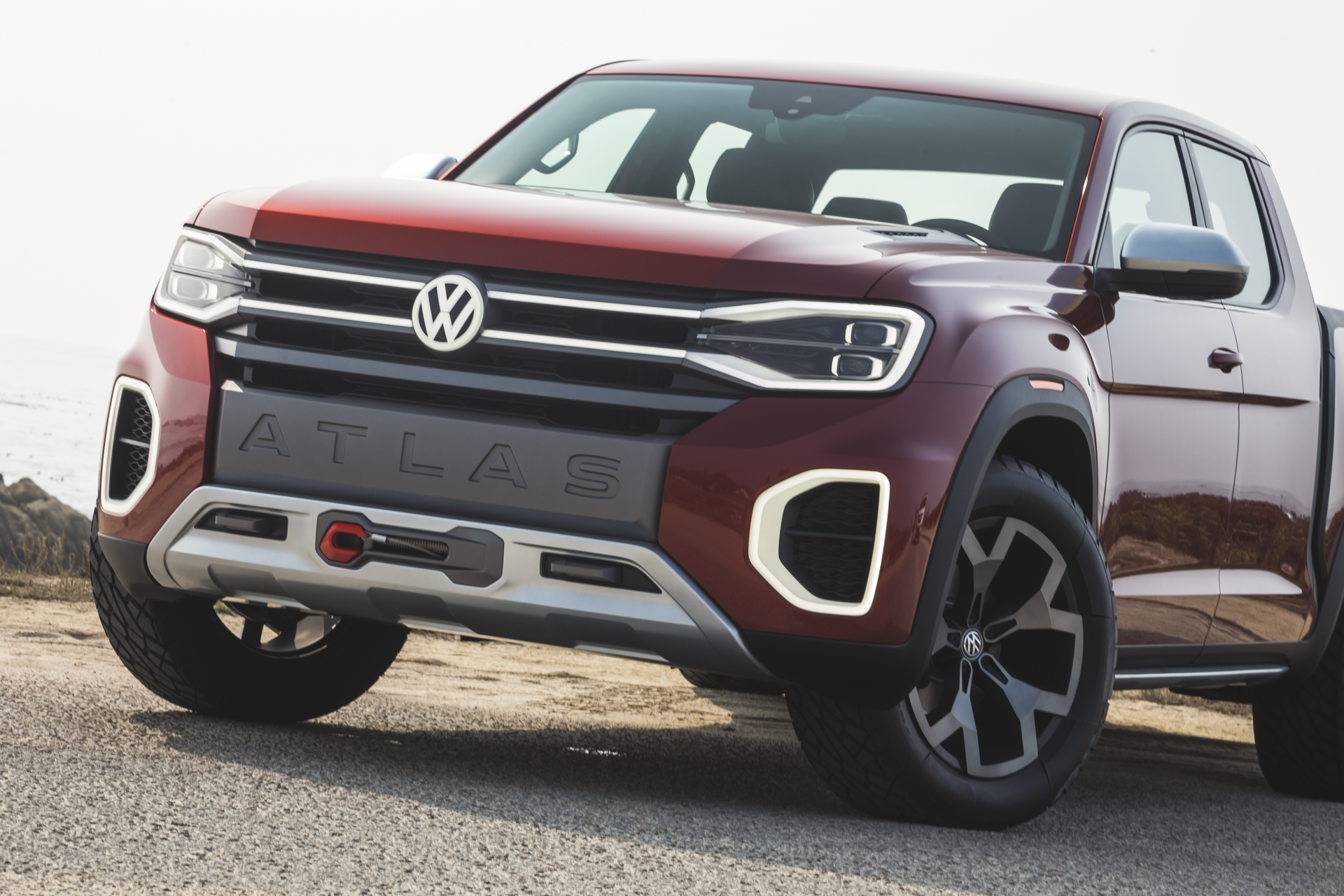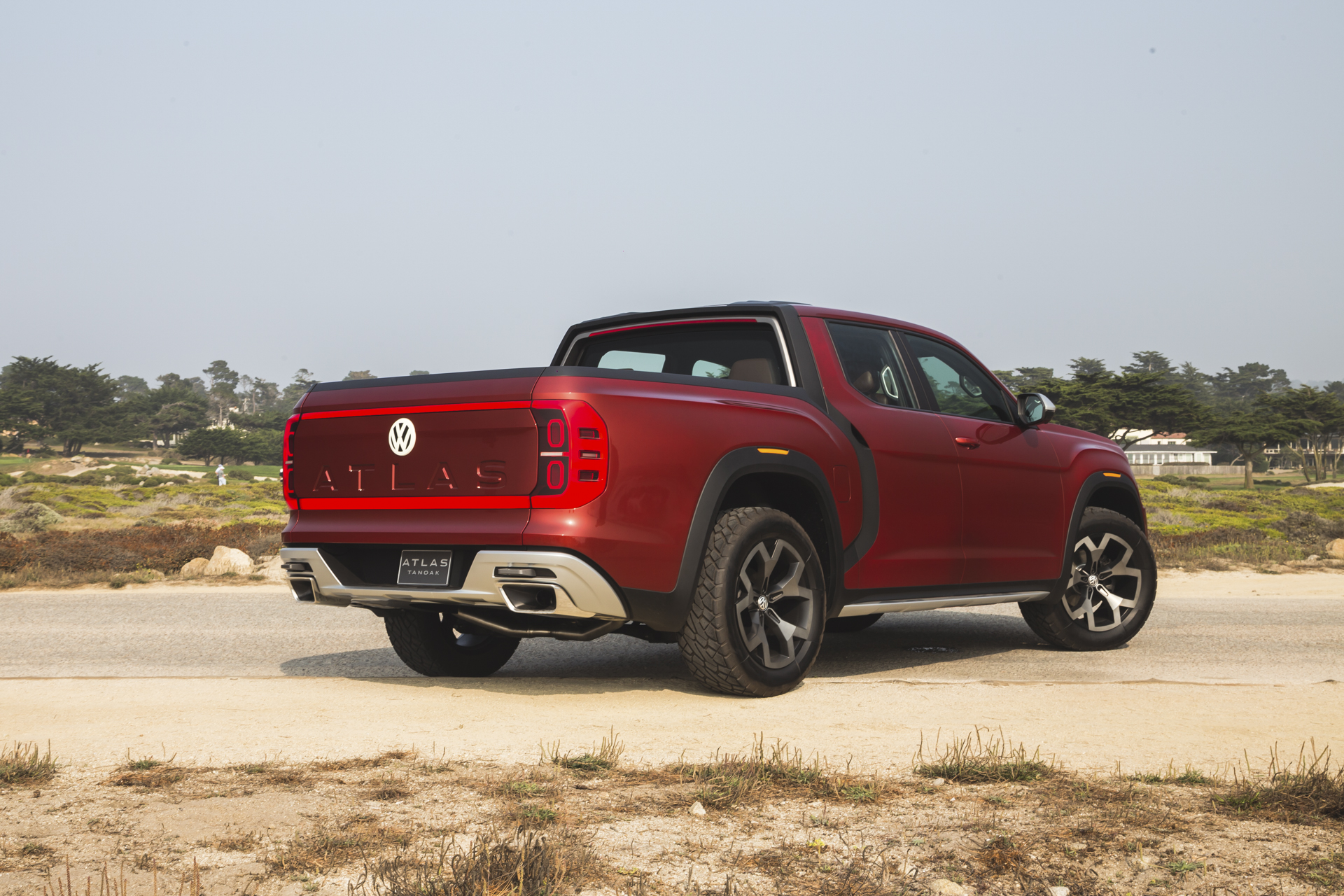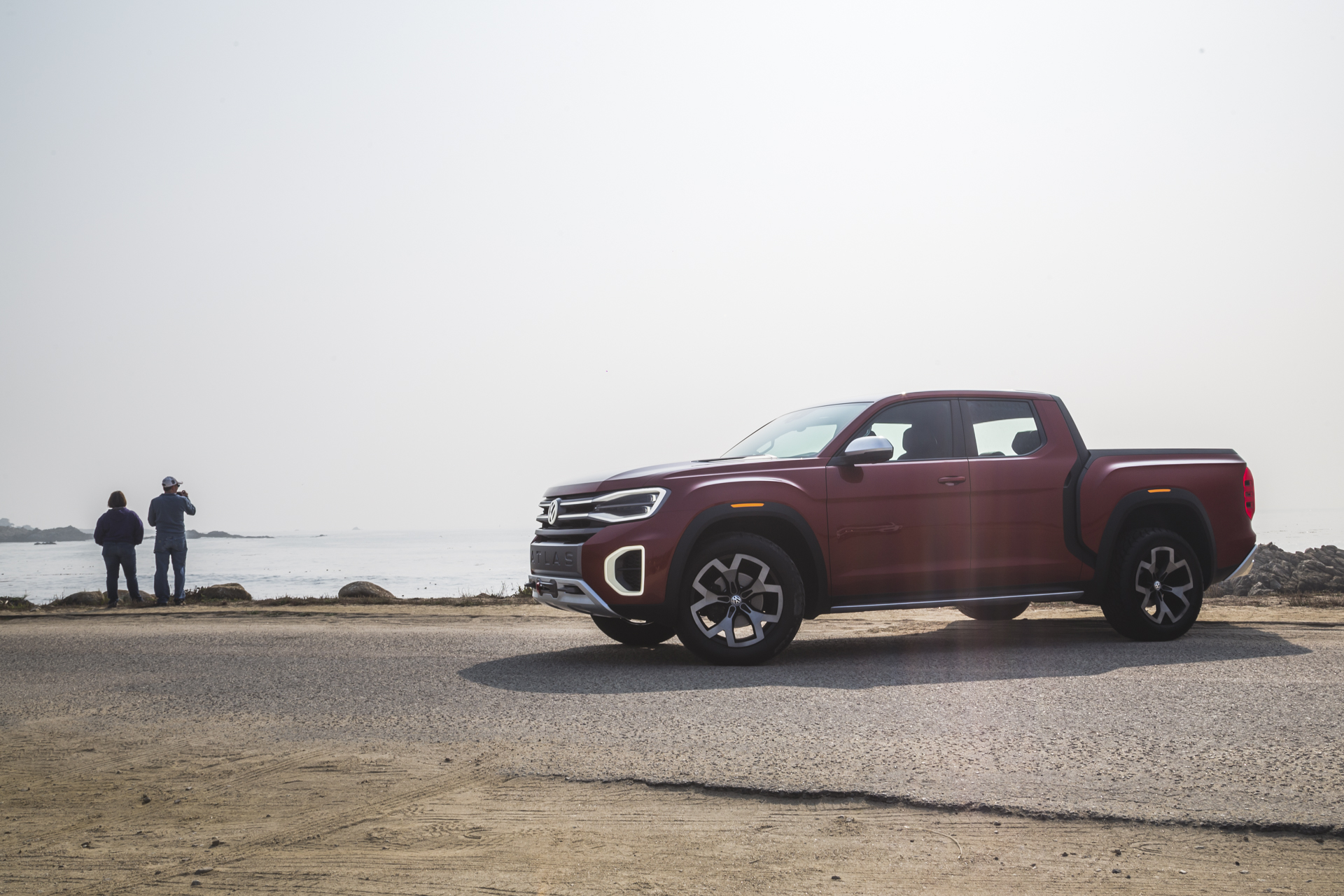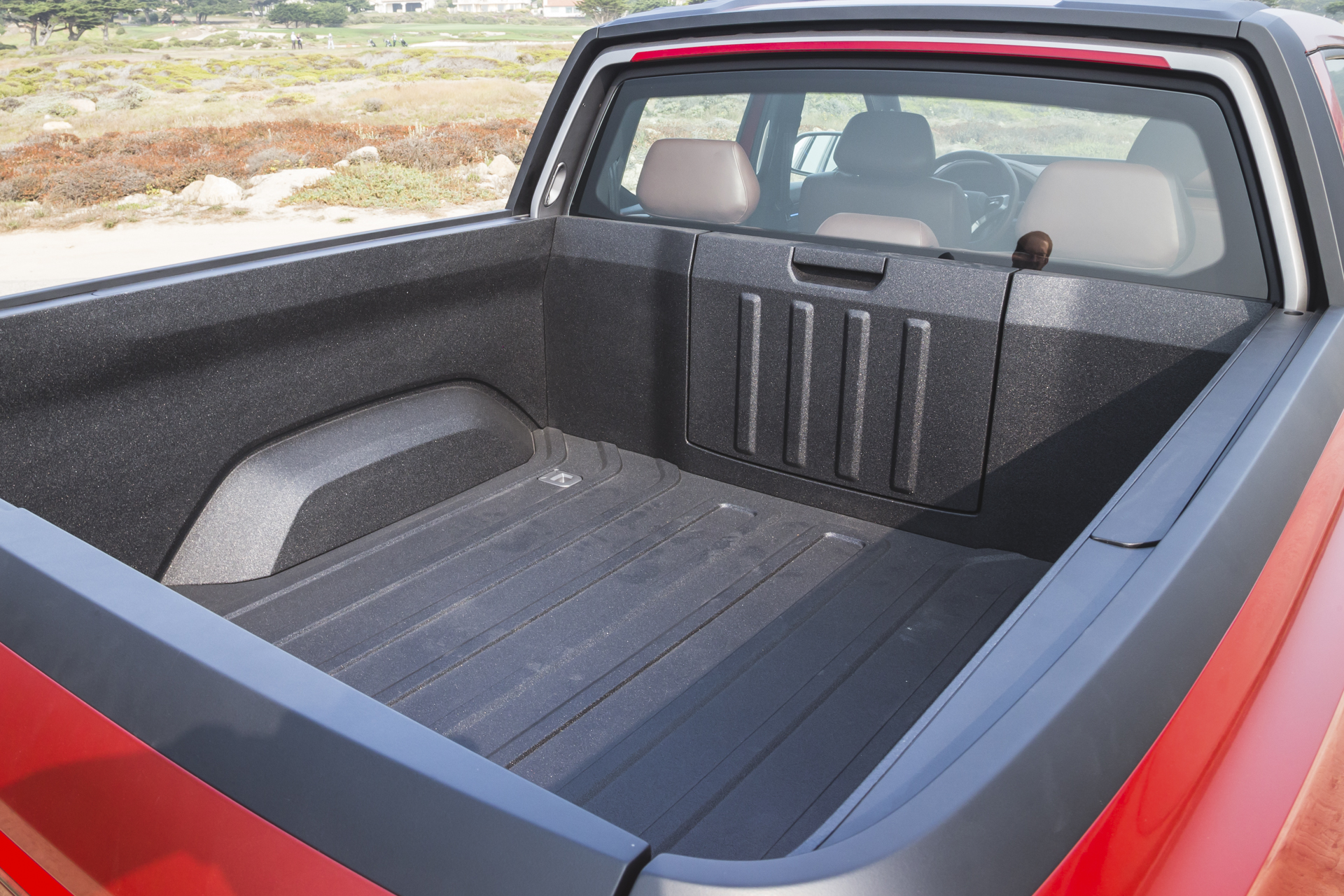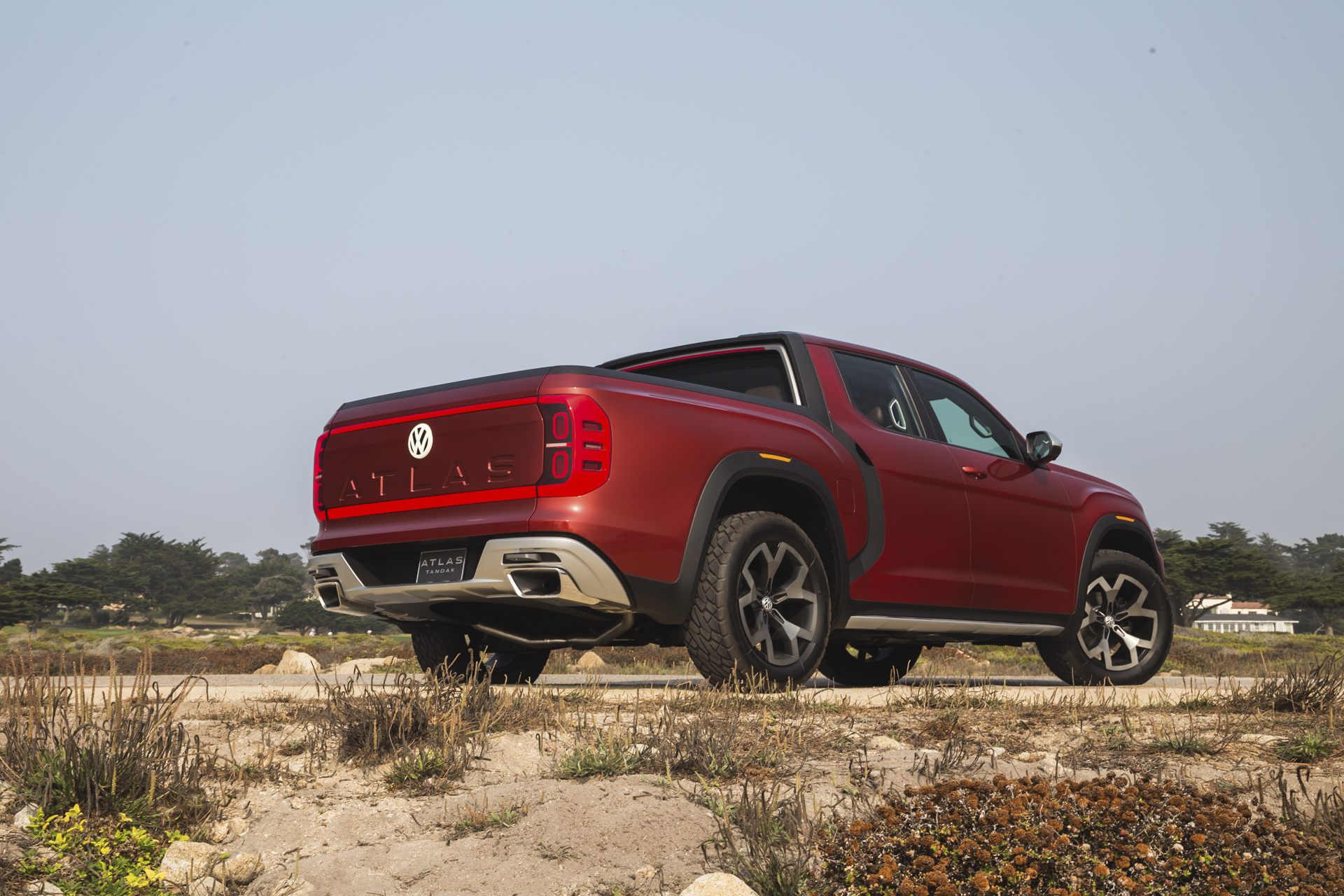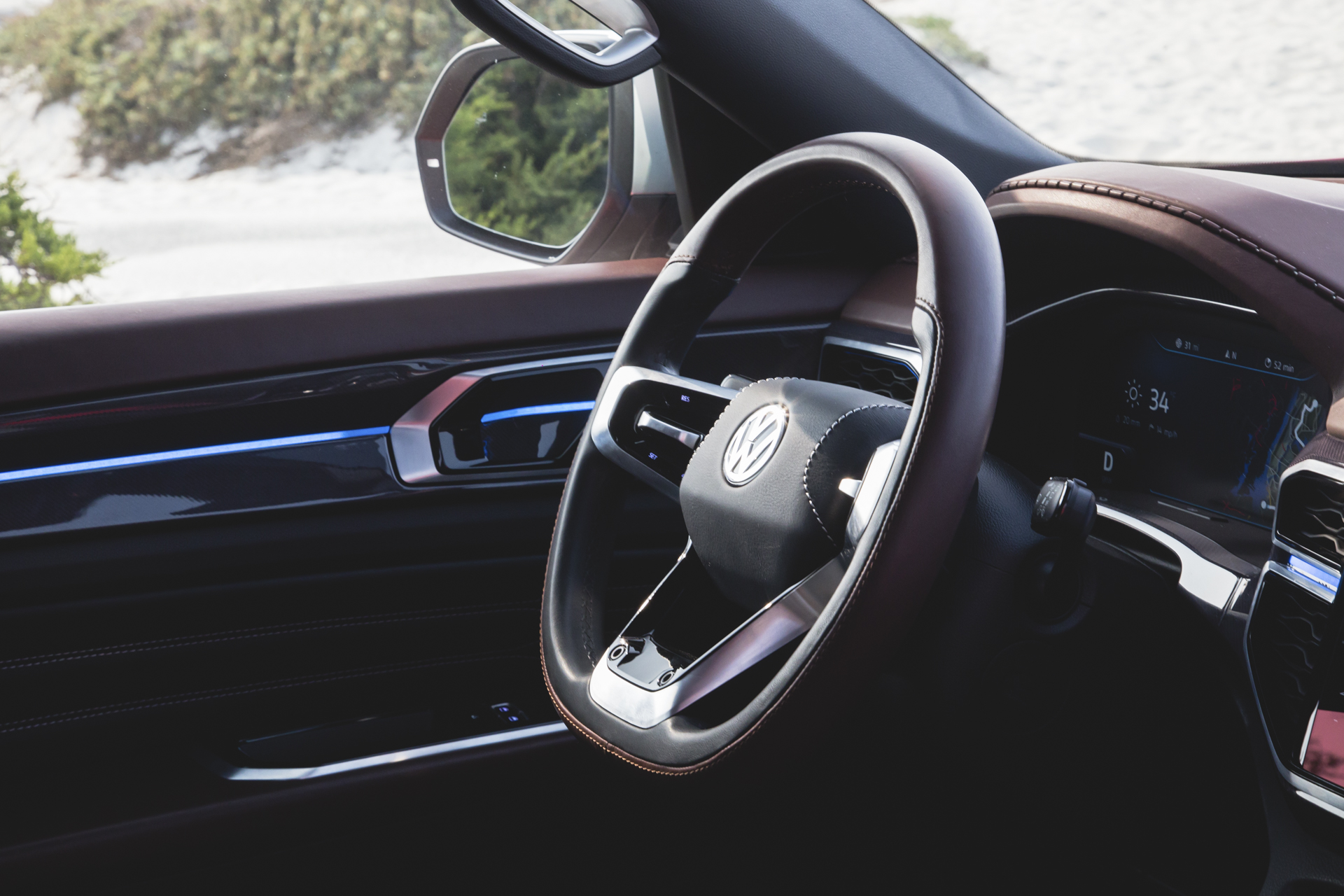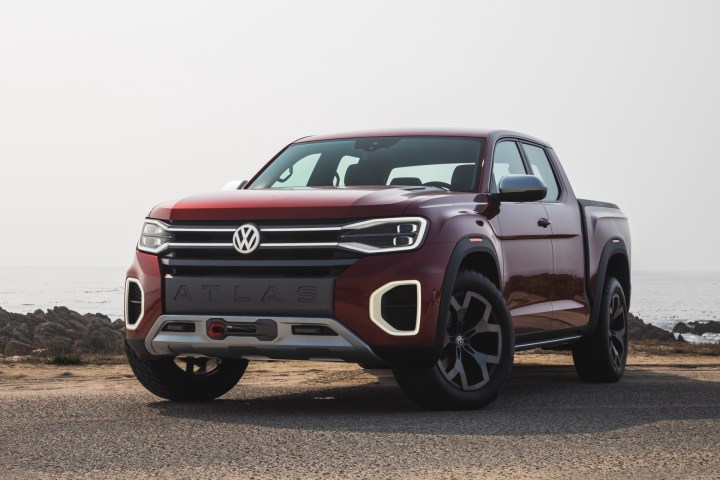
Volkswagen isn’t new to America’s pickup segment. It sold the Caddy, a trucklet based on the first-generation Golf/Rabbit, between 1978 and 1984. The Amarok currently represents the firm on the global stage but officials have no plans to offer the model in the United States. That doesn’t mean truck-loving Americans won’t see another Volkswagen pickup, though. The firm tested the waters with the Atlas Tanoak concept at the 2018 New York auto show and we took it for a spin in sunny California.
The Tanoak concept is essentially a unibody, Atlas-based model aimed primarily at the Honda Ridgeline, the only pickup truck sold in America not built on a separate frame. If launched, it would also inevitably compete against the Toyota Tacoma and the Chevrolet Colorado. The Atlas Cross Sport concept that we also drove is basically a smaller, more coupe-like variant of the full-size Atlas SUV.
Volkswagen Cross Sport concept
Pegged as an expansion of the company’s Atlas lineup, the Atlas Cross Sport concept is basically a shrunken-down, more coupe-like variant to the current full-size version upgraded with significantly more curb swag. It is to the regular Atlas what BMW’s X4 is to the X3 or the Mercedes-Benz GLE Coupe to the standard GLE. The X6 to the X5; you get the picture.
The Atlas is already a handsome Teutonic brute, and the Cross Sport concept makes it even better. With its lower roof line, upswept headlights, and the Atlas’ signature wide-axle stance accented by protruding wheel wells, the concept features a much more appreciably aggressive-looking front end. And, the Cross Sport also features frameless doors, a design cue we hope makes it to the production model.
Much of the Cross Sport concept’s interior wasn’t functional, which you’d expect for a concept prototype. It nonetheless provides a preview of what Volkswagen interiors could look like in the near future. It’s clearly a subtle evolution of the Volkswagen’s current interior designs.
We think the Volkswagen Atlas Cross Sport will be a big hit for those who think the standard Atlas is a bit too big.
The concept’s interior obviously acted more as eye candy with large touchscreens festooning both the instrument display and center console. While stunning to look at, we hope the production model will retain some physical switchgear for the more pertinent functions since tactile touch is an important part of making a safe, ergonomic interior.
The Cross Sport Concept certainly has more curb swag than the standard Atlas. But, what makes it go? The design study we drove features a dual-electric motor hybrid system aided by a gasoline V6 for a total output of 355 horsepower. The production model isn’t likely to get this powertrain; VW execs affirmed it’ll only get full gasoline power when it arrives.
We really couldn’t get much of a feeling behind the wheel since our run was limited to only 20 mph. But the Cross Sport certainly felt lower, smaller, and more maneuverable than the full-size model without sacrificing the very sturdy and commanding feeling of the road. When it reaches production in early 2020, we think it’ll be a big hit for those who think the standard Atlas is a bit too big.
Volkswagen Tanoak Concept
While the Cross Sport concept had the curb swag, the Tanoak (pronounced “tan-oak,” not “tan-oh-ack”) has the cool factor, stealing the attention away from all the million-dollar supercar metal cruising along the country club portion of 17 Mile Drive. Because it’s been so long since anyone in America saw a new Volkswagen pickup truck, the Tanoak easily became the frontrunner of the Atlas lineup, period.
The Atlas Tanoak concept might look like a traditional body-on-frame pickup with its black trim surrounding the cargo compartment. But the Tanoak, like the revolutionary Honda Ridgeline, is a unibody pickup truck. In essence, it’s an Atlas with its rear chopped off and in place of it is an open bed.
Both Volkswagen and pickup truck fans have been begging the company to produce a pickup truck for the U.S. market. With this desire catching the attention of VW executives, the company decided to entertain the idea and thus, that’s how we come to the Tanoak Concept.
With the Tanoak, it’s clear Volkswagen has a strong grasp on how to make a solid pickup that has the potential to be a winner.
Unlike the Cross Sport, the Tanoak felt far more upright from behind the wheel. Its interior was as nonfunctional and screen-happy as the Cross Sport’s, which again might not bode well in real life, especially among the practical bunch of pickup lovers. With its boxier profile, however, the Tanoak certainly felt much roomier and utilitarian than the Cross Sport.
When on the road crawling at 20 mph, the concept’s sturdier unibody design was hugely apparent, making it feel far more crossover SUV-like than GM’s or Toyota’s body-on-frame trucks. None of the usual chassis shudder over road imperforations and bumps found in traditional trucks were perceptible in the Tanoak, giving it a significantly more premium feel. And yet, it felt just as sturdy and brutish as the current production model.
Whether the Tanoak makes it to dealerships is still a strong maybe from Volkswagen of America. But if the Tanoak does make it to production, it’s clear the firm has a strong grasp on how to make a solid pickup that has the potential to be a winner. Especially with the growing midsize pickup truck market that has Ford reviving the Ranger to compete against the Chevrolet Colorado and updated Toyota Tacoma.
